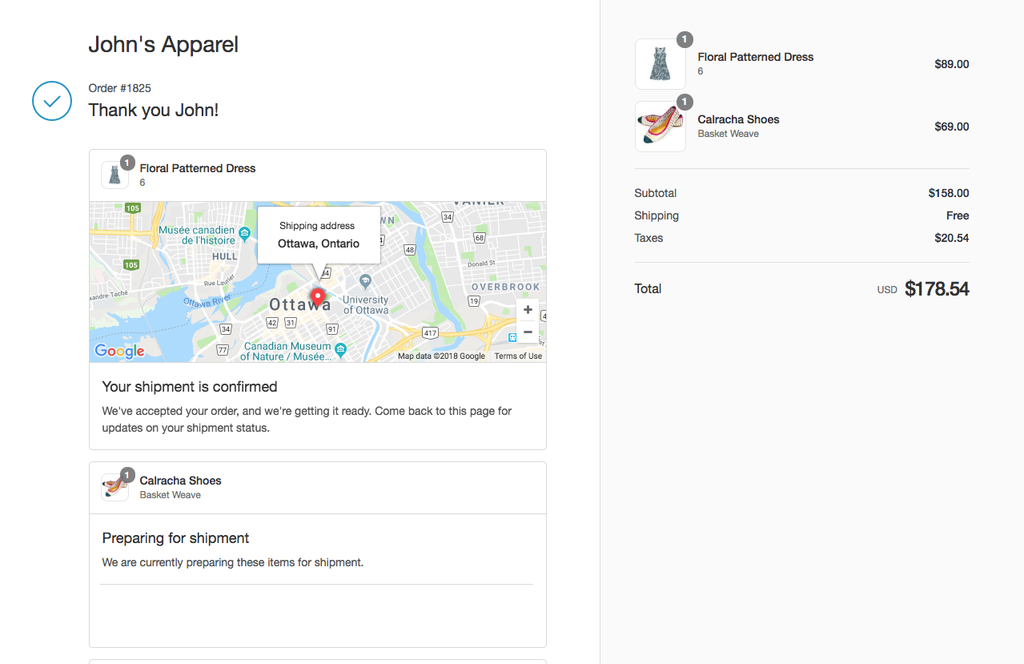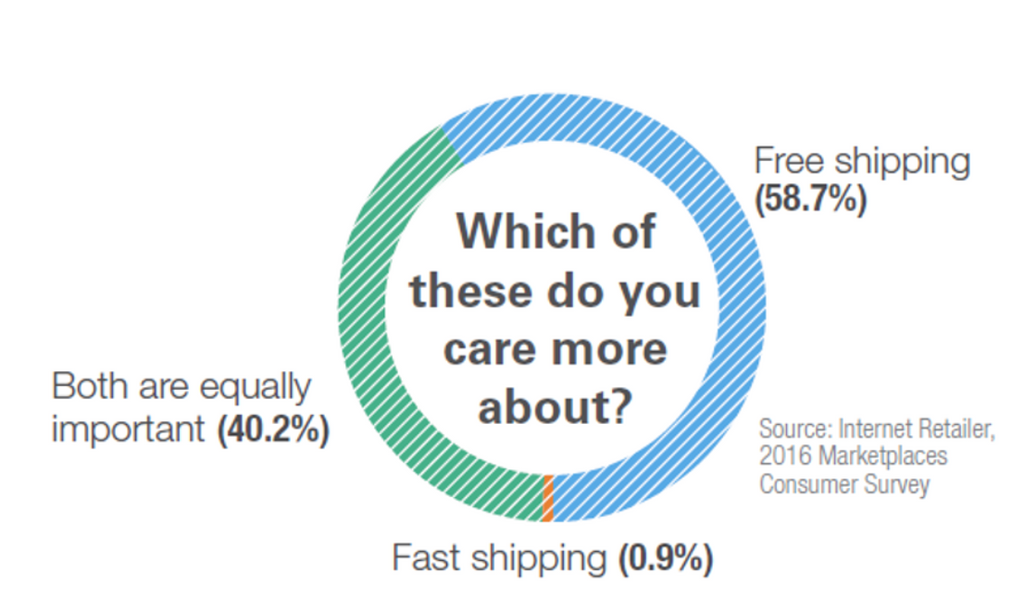The Trellis Guide to the E-Commerce Customer Lifecycle – Fulfillment
Jack D'Errico
Jack D'Errico
Here we are again. The fourth article in our six-part series on the E-Commerce Customer Lifecycle (ECL) documents the post-purchase stages of your online shoppers’ interaction with your brand. We will go over the various factors at play to ensure your customers receive their orders without a hitch and give you a playbook to rely on moving forward.
On the surface, fulfillment seems pretty simple and straightforward. Once you figure out how to get shoppers to visit your online store and entice them to buy your products, then you just need to find a way to get the product to the buyers. You may think the hard part is over, but fulfillment should not be 0verlooked.
For a smaller business that is just beginning, the process is simple. Pur your product in a box, attach a shipping label or stamp and send it on its way.
Yet, as your business grows, your order sizes and order volumes will increase past the point of being able to handle shipping on your own.
Affordable prices, flexible shipping options, and fast delivery are desired by almost every E-commerce shopper consistently. These are key deliverables that need to be optimized for any successful business selling online.

In fact, according to this e-commerce survey, two-thirds of shoppers bought goods from one retailer in preference to another because the delivery services offered were more appealing. The same survey also found that 96 percent of shoppers said that a positive delivery experience would encourage them to shop with a retailer again. As we know from past articles, repeat purchases are vital in order to maximize the lifetime value of a customer.

Merchants that make the entire shopping process as smooth as possible for the consumer are rewarded with positive customer reviews and usually enjoy the greatest longevity in the business. For example, online merchant MotherDirt includes customer reviews on its site to reinforce the company’s attentive customer service and reliable shipping.
And that’s all without even considering the significant financial impact that fulfillment and shipping decisions can make.

This sample fulfillment pricing proposal from FulfillmentCompanies.net shows the major cost categories that merchants can expect from a typical fulfillment engagement. Add to this shipping costs, taxes, and customs, and it’s easy to see that your fulfillment strategy can be the difference between being profitable or not.
The Keys to Successful Fulfillment
Now that sales are rolling in, what is the best way to get your exemplary products into the hands of your customers?
There are many factors at play here. So a well-defined fulfillment and shipping strategy is vital.

1. Online Checkout
The fulfillment process begins with your online checkout process. It should be quick and easy, with delivery options and dates clearly displayed, like the above example from one of our site transformations Cabbage Patch Kids. Your payment provider should be trustworthy and secure.
2. Order Management System
This internal-facing system tracks all your current (and past) orders, including where exactly the product is and how long it will take to get to the customer. It can also give you triggers for the next phase of the e-commerce customer lifecycle: retention.
Shopify’s Orders tab is a simple way to manage your online orders. Every order goes through three stages:

If you choose to work with a 3PL, the company will likely have its own order management system.
3. Order Status Tracking
This customer-facing system tells buyers when their product has shipped, when it is expected to arrive, and provides frequent status updates to manage expectations and set the customer at ease.
Shopify’s order status page shows customers:
- Status of their shipment
- Real-time updates on the location of their shipment
- Options for Messenger, SMS, and email notifications

Tracking information can also be pushed out to customers via a series of automated emails, text, social media direct message, or other platforms. Post Purchase tracking can prove extremely effective by reinforcing brand values, customer loyalty, and reduces shipping problems as well. Customers enjoy visibility throughout the entire buying process.
4. Inventory Management
Inventory management may be a standalone system or may be integrated with your order management tool so you can:
- Track how much stock you have available for every product you sell (including multiple variations on a single product in different sizes, materials, colors, etc. with individual SKUs, prices, weights and inventory numbers)
- Know when to place orders or manufacture more product
- Update inventory numbers when you receive a shipment
- Ensure that your website accurately represents your available stock at any moment
If you are on Shopify, check out our step-by-step guide for How To Add Inventory Management to Shopify.
Otherwise, our favorite app for standalone inventory management is Stitch Labs. Another great omnichannel solution is BrightPearl.
5. Packaging
Whether you’re placing the product into a standard cardboard box or assembling a branded package complete with decorative tissue paper or filler, a flyer, and a gift-with-purchase, your packaging is a significant part of the fulfillment process. The packaging is important when it comes to the branding of your company. A well put together a box full of colors, goodies, and extras is much more appealing than a plain box or envelope containing an order slip and the product alone. Use packaging as an opportunity to reinforce your brand values and give your customers a sense of joy as they tear through the tape or seal.
Your choices here are limited to either doing the packaging yourself (realistic only for small quantities with simple packaging processes) or partnering with an external shipping service. As you grow you will need to find alternative solutions to maintain a high level of quality.

6. Shipping
Online shoppers love free shipping. The infographic above from Commerce Hub shows that nearly two-thirds of people surveyed said they care more about free shipping than fast shipping. But even if your brand is all about free shipping, your customers are paying for it in other ways. Because shipping is a costly and labor-intensive process.
E-commerce shipping follows a somewhat predictable path as your business grows from its first initial orders into a booming business:
- Ship it Yourself (Option 1: Starter): This is a fully manual shipping process. You write out the mailing label, take the package to the post office, and mail it to your customer. For a new business, this manual approach is a great learning opportunity and may be the most cost-effective while you are small. It helps you understand the many elements that come into play when shipping products, giving you the experience to later refine your operations and better control your brand while you scale your business.
- Ship it Yourself (Option 2: Intermediate): You’re still doing all the shipping yourself, but now you move up to automated label printing and scheduling package pickup from a courier. ShipStation makes this process as easy as possible. They integrate with the major eCommerce platforms and online marketplaces like Amazon, Shopify/Plus, BigCommerce, eBay, and many more. They are the industry leaders and their suite of services is growing. You choose a box size and shipping method (first class, priority, priority express) and the program automatically calculates the shipping costs based on your box size, product weight, and the shipping method.
- Fulfillment Warehouse: Once your e-commerce business has established some order predictability and regularity, partnering with a fulfillment warehouse will save you time and let you focus on growing your business and acquiring new customers. It can reduce your overall cost of doing business (with a single flat fee instead of multiple fees for storage, packing, shipping, etc.). You’ll also be able to maintain more accurate inventory control to know exactly how much stock you have at any point in time. Working with an external partner also makes it easier to scale your fulfillment as your business continues to grow.
- Dropship: Orders are shipped directly from a dropship partner on behalf of your brand. You never purchase inventory upfront or hold inventory yourself. This is an increasingly popular trend that is rising thanks to Social Media.
Using a fulfillment warehouse or dropship service is most beneficial for businesses that have grown to require multiple location fulfillment, inventory housing, and multi-channel sales (wholesale, Amazon, online, brick + mortar).
When considering a fulfillment partner, it’s important to consider their ability to respond to changes in your fulfillment process, such as additional SKUs, peak periods (like Black Friday), seasonal spikes of select products/categories, over-stocking, and express deliveries. You need a partner who can be flexible and respond to your business’s needs as they grow and change over time.
8. Returns Management
Almost half of the online shoppers would shop more with retailers that offer hassle-free returns. That means quickly and easily processing returns, refunds, and exchanges.
Check out our best practices guide on how to maximize the returns aspect of your online business.
Leave a Comment